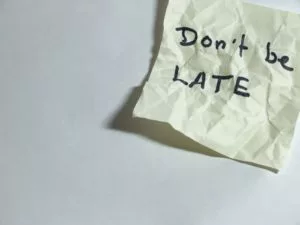Parents of teens who abuse drugs or alcohol may feel helpless in the face of changes their children are facing.
One moment, the teen was young, vibrant and full of life. The next moment, the teen seems dull, uninspired and headed down a frightening path. Interventions are a way to help show your struggling teen that you love them and only want the best.
Interventions for Troubled Teens
Parents may desperately want to help their children, but they may also be completely unsure of how to do that. An intervention might provide an answer. Here, the parents and the teen begin a conversation about addiction. Bringing the issue to light and helping the teen understand why getting help is so very important.
It’s a conversation that could be transformative, both for the parents and for the teen.
Intervention Basics
According to the Mayo Clinic, an intervention is a structured conversation in which the teen is confronted with evidence of the addiction and encouraged to accept help in order to overcome it. The people who participate in an intervention vary, but often the team includes the parents, grandparents and siblings of the teen. Some teens have strong connections to their coaches, members of their church, their peers or their neighbors, and these are also good people to include in an intervention. Anyone who has pull with the teen, and who has experienced the effects of the addiction on a first-hand basis, is a good person to include on the team.
Taking the First Steps
As the intervention begins, each participant reads the addict a heartfelt letter. It’s important that the letters do not contain any criticisms or negativity towards the teen. Instead, the letters follow this format, according to the website Love First:
- An opening expression of love and support, such as, “I am here today because I love you and I am thankful for the joy you have brought into my life.”
- A recap of the concept that addiction is a disease that the teen needs help to recover from. An example might read, “I know that alcoholism is a disease, and that it is nearly impossible to stop drinking without help.”
- A recalling of a specific incident in which the addiction has caused the speaker pain or discomfort, such as, “Last weekend, I found you collapsed in your room and you smelled like alcohol. I had to call an ambulance for you, and I thought you would die.”
- A plea for the addict to enter treatment, such as, “I have chosen an excellent rehabilitation program for you, and I’d like you to agree to accept this help.”
An interventionist leads and directs the meeting. The interventionist fields questions from the teen and making sure that everyone uses positive language and stays firmly focused on the benefits of help, not on blaming the teen for bad behavior. The chairperson might also step in if the teen walks out of the intervention. In this case, the interventionist will follow the teen and encourage them to return to the conversation.
Model Variations
 The Johnson Model
The Johnson Model
The intervention described above is based on a model developed by Dr. Vernon Johnson in the 1960s. According to an article published in Psychology Today, this is the intervention model used in A&E’s television show Intervention, and some people believe it is the best way to encourage people to enter treatment.
However, there are some limitations to the Johnson Model. People who use a strict form of the Johnson Model may include threats or consequences in their letters to the addict. For example, the family may tell the teen that he/she is cut off from financial support until they accept treatment. Or, the family may actually threaten to remove the child from the home if he or she will not accept treatment. Some families are uncomfortable with this idea of ‘tough love’. Your chairperson will help decide what type of intervention may work best for your family.
Power of Encouragement Model
The science of addiction clearly demonstrates that addicts endure chemical and physical changes as a result of their addictions, and as a result, they may be physically unable to make decisions that are right for them. They may desperately want to stop abusing drugs or alcohol, but they may be physically unable to do so. Punishing people will not help. Encouraging them that they actually can heal in treatment, and providing them with the hope of recovery, may be much more effective.
According to an article in the Journal of Substance Abuse Treatment, 71 percent of parents successfully encouraged their teens to enter treatment using this model. The advanced training they received allowed them to speak clearly and directly with their teens about addiction. As a result, they were able to hold persuasive interventions.
Preparing for an Intervention
An interventionist or chairperson is often an experienced therapist that helps the family plan for the intervention. The interventionists directs the meeting, ensuring that emotions don’t spin out of control.
First, the families need to determine exactly where the teen will go for treatment. The interventionist may shed some light on this issue, and if the child’s doctor has been notified of the addiction, the doctor may also have good suggestions. If experts believe that the teen should enter an inpatient residential program for addiction, the family should find the right facility and enroll the teen prior to the intervention. Then, as soon as the teen agrees to enter treatment, the plans are in place and the family can quickly move forward.

Interventions should take place almost anywhere that is private, also somewhat unfamiliar to the teen. Holding the intervention in the family home, for example, could allow the teen to simply storm away to his/her room when the conversation gets uncomfortable. Holding the intervention in the basement of the local church, by contrast, would make it harder for the teen to opt out of the proceedings. Furthermore, an intervention should be held when the teen is awake, aware, and not likely impaired by drugs and alcohol.
Intervention Day
Holding an intervention can certainly be nerve-wracking, and it’s common for families to feel frightened and concerned. In addition, emotions run high in an intervention, and it can be easy to lose control, slip into bad habits, and damage the relationship between the parent and the teen.
In order to help families prepare for these delicate conversations, the Partnership for a Drug-Free America offers these tips:
- Be direct. Abstract phrases, such as “Alcoholism is dangerous,” are not as effective as direct statements like, “I can smell alcohol on your breath every day.”
- Stay calm, withholding anger and judgment. Remind your teen how much you love them, and that you always support them.
- Focus on the behavior, not on the teen. Addiction is a disease, and treatment will give them the skills to live a happy life in recovery.
- Give your teen your undivided attention. No cell phone calls, email messages, text messages or visitors are more important than the conversation you’re having right now.
- Remember that this is about health and well-being, not about poor behavior.
Some interventions move smoothly, and the teen almost immediately agrees to enter a treatment program. Other interventions may not be as immediately successful, but that doesn’t mean that they’re complete failures. Some teens may continue to process the information they receive in an intervention for weeks or months after. If your fist intervention does not succeed, continue to keep conversation with your teen direct and open. Remind them daily that you love them, and only want the best for their future and family relationships.
If you need help staging an intervention or more information on treatment for your teen, contact us today. We are here to provide answers.






